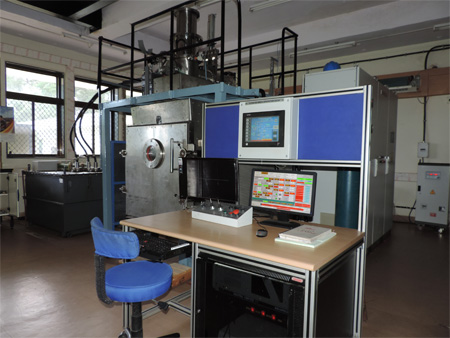

12kW, 80kV Electron Beam Welding (EBW) Machine is used for welding circular seams (280 mm maximum outer diameter) and linear seams (200 mm maximum length) of refractory as well as high strength materials such as Niobium, Zircalloy and maraging steel.
Electron Beam Welding (EBW) can produce deep penetration welds with very low mechanical distortion. This reduces the post weld machining cost. EBW is also useful in welding thick sections in a single pass. This process is preferred in applications wherein the purity of the weld is of utmost importance since the weld process is carried out under vacuum.
EBW is mainly used for welding of nuclear and aerospace components. Advancements in the EBW process automation has led to increased production throughput. Hence this welding process is presently receiving wider application in automotive and microelectronics industries.
12kW, 80kV Electron Beam Welding (EBW) Equipment is used for welding circular seams (280 mm maximum outer diameter) and linear seams (200 mm maximum length) of refractory as well as high strength materials such as Niobium, Zircalloy and maraging steel.
The major sub-systems of the EBW equipment are as follows:
Electron Beam Welding (EBW) is a fusion welding process wherein a focused beam of high energy electrons is directed to the weld joint. The work-piece melt as the kinetic energy of the electrons is transformed into heat upon impact. Electron beams (EB) are amenable to fine control and therefore it is possible to obtain a high degree of accuracy and repeatability of the welding process under vacuum.
BARC has indigenously developed the 12 kW, 80 kV Electron Beam Welding Machine to weld circular seams (280 mm maximum outer diameter) and linear seams (200 mm maximum length) of refractory as well as high strength materials such as Niobium (Nb), Zircalloy (Zr) and maraging steel.
The following are advantages of EB Welding compared to the other available popular welding methods:
Electron gun & Power Supply
Work Chamber
Work Handling System
Vacuum System
Due to the high power density of the beam spot, this welding process can produce deep penetration welds with very low mechanical distortion. Hence EBW can be the last step in the manufacturing sequence. This reduces the post weld machining cost. EBW is also useful in welding thick sections in a single pass. In applications wherein the purity of the weld is of utmost importance, EBW has found favor as the weld process in carried out under vacuum.
EBW is mainly used for welding of nuclear and aerospace components. Advancements in the EBW process automation has lead to increased production throughput. Hence this welding process is presently receiving wider application in automotive and microelectronics industries.
The major sub-systems of the EBW machine are as follows:
The EBW is defined as a fusion welding process wherein coalescence is produced by the heat obtained from the concentrated beam composed of high velocity electrons. The kinetic energy of the electrons changes to thermal energy thereby melting and fusing the work piece metal. Welding is often done in a vacuum environment to prevent dispersion of the electron beam.
The EB is formed inside the EB gun chamber which consists of a filament, grid electrode and the anode. The electrons are generated by heating the filament and are accelerated by applying a high voltage between the filament and the anode. The grid electrode controls the amount of electrons that constitute the beam. The EB emerges from the gun through an aperture in the anode. It is then focused by electromagnetic lenses onto the weld joint. The work handling system maneuvers the job under the beam in a desired manner to complete the weld.
EBW machine needs expertise and manufacturing and test facilities in following areas:


